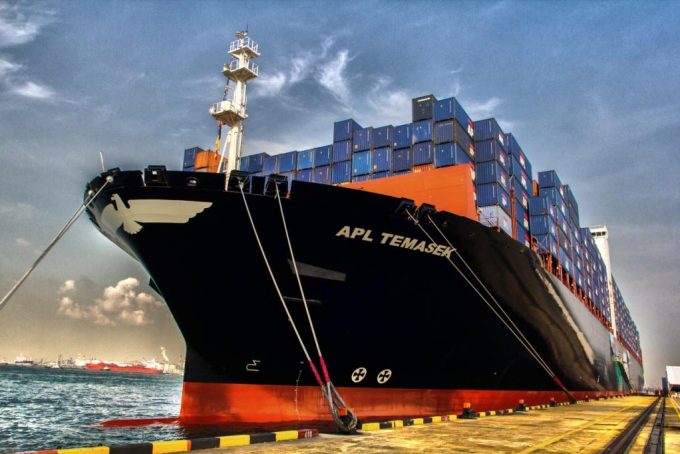CMA CGM see Q1 profit slump but bets on Bollore bounce
A weaker market ate into CMA CGM’s Q1 with a 7% fall in revenues leading ...

Asia-North Europe carriers are continuing to slash FAK rates as the container spot market records another weekly decline.
APL and parent company CMA CGM announced today that from 1 June, the 40ft FAK rate would be cut by $100 to $1,800 for the Le Havre-Hamburg range of ports and to $1,850 for the UK ports of Felixstowe and Southampton.
The decision follows Maersk Line confirming last week it would lop $300 off its 40ft rate from the middle of this month.
According to The Loadstar’s forwarding contacts, most other carriers immediately matched the Maersk move with immediate discounts on existing agreements.
“It looks like Maersk may have started another rates war,” said one source. “I have had several calls offering discounts since the news broke last week.”
And today’s Shanghai Containerized Freight Index (SCFI) recorded a further decline in spot rates between Asia and Europe.
For North Europe, there was a 5.9% drop to $723 per teu, and for Mediterranean ports rates a 4.1% fall to $696 per teu. Spot rates on the trade have now fallen by 27% and 30% respectively since the start of the year.
The impact from the slide in rates will hit ocean carriers hard in the second quarter, after a generally satisfactory first three months. Indeed, during the Hapag-Lloyd Q1 earnings call last week, chief executive Rolf Haben Jansen gave a nod to the pressure on results in the second quarter.
He said: “I would not be disappointed if the result would be a little bit lower in Q2 that it was in Q1.”
The soft market headwinds in Q2 will add more pressure to serially unprofitable carriers such as Yang Ming and HMM, which posted losses in the first quarter, albeit recording improvements on the previous period.
And there was also bad news for carriers serving the transpacific market, with the US west coast component of the SCFI recording a 7.1% drop to $1,340 per 40ft, following an 8.1% slump the previous week.
Rates from Asia to the US east coast also fell, by 4.2% on the week, to $2,597 per 40ft, having been supported in previous weeks by tighter capacity resulting from temporary draught restrictions on the Panama Canal.
And with the trade negotiations between the US and China in a state of flux – and the rhetoric suggesting a further escalation of tit-for-tat duty skirmishes – transpacific headhaul shippers have no idea if new 25% tariffs on Chinese imports yet to be targeted by the Trump administration will be rolled out on 1 June.
In fact, digital start-up Freightos reported today that air freight searches had spiked by 35% as BCOs researched options for possible last-minute attempts to beat new tariffs imposed by the US.
George Griffiths, editor, global container freight market, at S&P Global Platts, noted that importers with containers loaded on ships discharging at US east coast ports on or after 1 June could be hit hard if the US followed through with the new tariffs.
Comment on this article
Rajiv Sathe
May 18, 2019 at 4:49 amBy reducing the rates the trade volumes are not going to increase. what is the need for a rate reduction? Is it to make competition financially weak?
Daniel Pettersson
May 21, 2019 at 2:43 pmEver heard of market share?